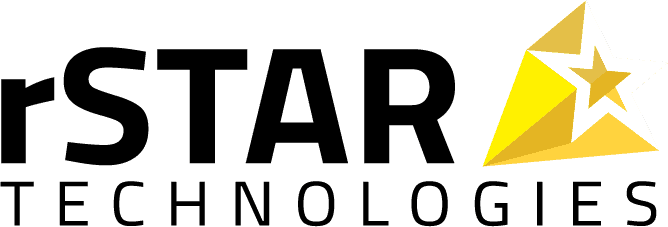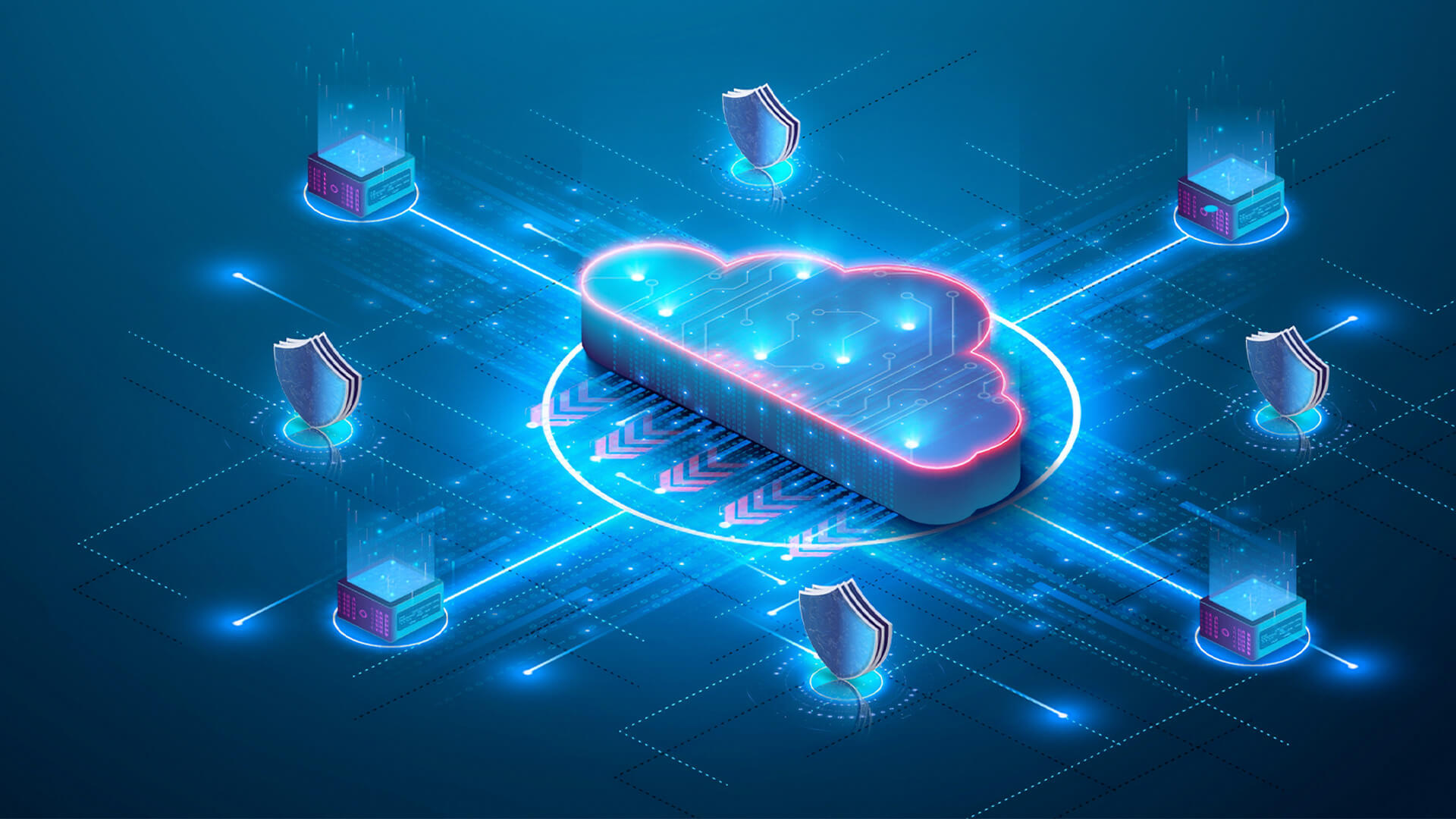Oracle Cloud Infrastructure (OCI) is a second-generation Cloud that provides a better-than-ever foundation for AI. OCI utilizes multi-cloud, core-to-edge security, which means that customer data is safer than ever. It can dramatically lower Compute costs and manage new high-performance workloads. Users can also expand OCI data center coverage, providing the power and governance of enterprise cloud platforms with the flexibility and scalability of public clouds.
Table of Contents
However, the new features of the Oracle Generation 2 Cloud extend far beyond the underlying infrastructure. There is a suite of services that span application development, integration of Oracle and non-Oracle apps, both on-prem and in the Cloud, analytics for reporting and visualization, multiple layers of security for, users, data and infrastructure, and the Oracle Autonomous Database. All of these components make the Oracle Generation 2 Cloud autonomous, secure and extendible.
The Oracle Cloud is a secure, unified architecture for all applications, from the Oracle Autonomous Database and SaaS applications to enterprise and cloud native applications.
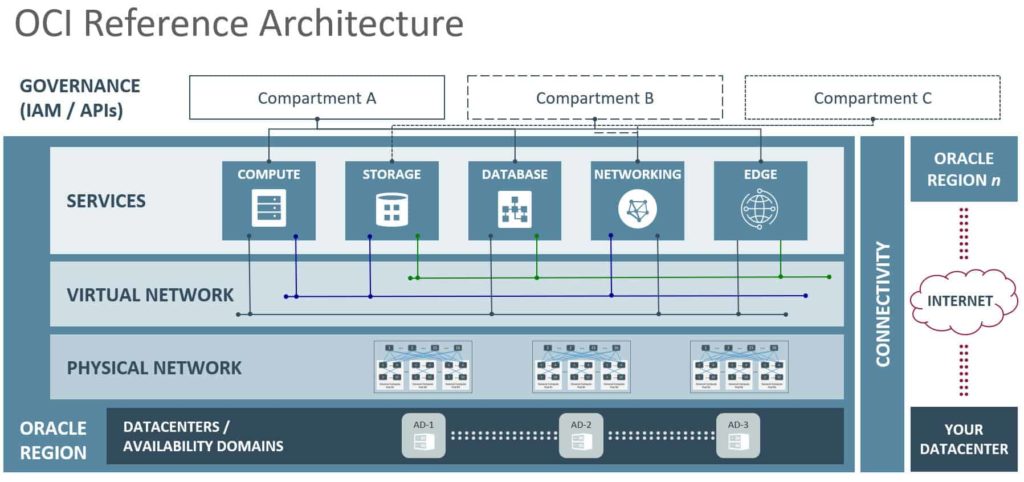
Key Features
- Security – Offer customers effective and easy-to-use application, platform, and network security solutions that allow them to protect their workloads, constrain access to their services, and segregate operational responsibilities to reduce the risk associated with malicious and accidental user actions. OCI now incorporates an identity and access management (IAM) suite into its core cloud offering to provide more security, governance and auditing capabilities. With the IAM suite, administrators can manage users, groups and access privileges.
- Performance – Oracle’s latest cloud offering, OCI Generation 2, is not just an upgrade to OCI Classic, it’s a complete rebuild from scratch, incorporating the experience and lessons learned from OCI Classic. The new network design and layout is at the heart of the redesign and is critical to the performance and scaling of OCI v2.0.
- Customer Isolation – Allow customers to deploy their application and data assets in an environment that commits full isolation from other tenants and Oracle’s staff. OCI offers Bare Metal instances, VM instances, Virtual Cloud Network and IAM Compartments in order to achieve the customer isolation.
- Open Standards – Due to the strong shift to Cloud native technologies and DevOps methodologies across businesses of all sizes, companies are seeking an open Cloud that offers flexibility and avoids lock-in. Oracle embraces open standards, so organizations can pursue the hybrid and multi-Cloud strategies that make sense for them. Oracle works to promote open standards in Cloud development through its partnership with the Cloud Native Computing Foundation, and it embraces interoperable standards like Terraform, Kubernetes, and Helm.
- High Availability – Offer fault-independent data centers that enable high-availability scale-out architectures and are resilient against network attacks, ensuring constant uptime in the face of disaster and security attack. OCI provides three options for HA – Multi-Region, Multi-Availability Domain, Multi-Fault domain within Availability Domain SLAs
Autonomous Database
Oracle Autonomous Database is the next generation of Database Cloud services. This innovative offering will help eliminate human labor via machine learning. It is self-driving, self-securing, and self-repairing. These key attributes help customers save on costs and time. As they use resources to meet their needs, customers can scale the system up when they need it and down when they don’t.
Migration to Gen 2
With the launch of Gen 2, more and more customers are looking to migrate their existing OCI Classic Gen 1 environment because the new cloud provides more value running the same workloads with better features, faster speed, and lower cost.
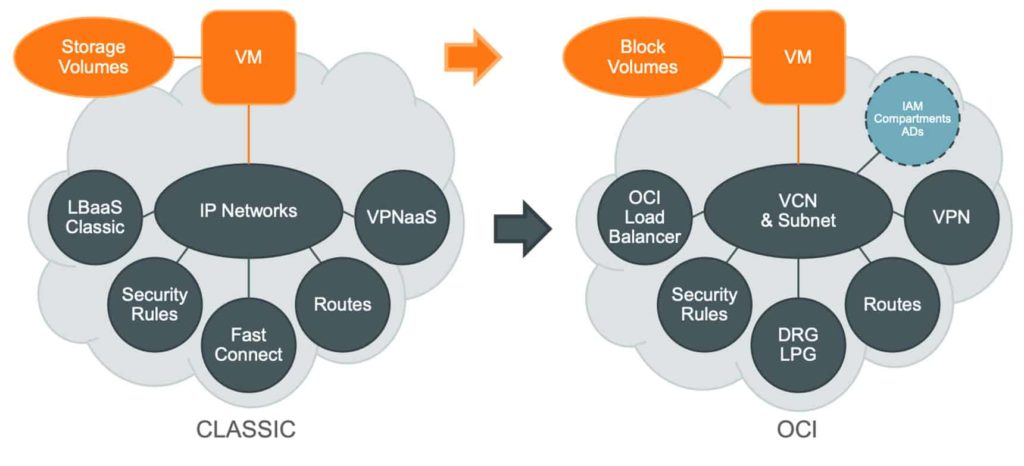
The following considerations are crucial in planning a migration from OCI Gen 1 to Gen 2:
- General (Customer technical expertise, Timing and downtime expectations, Business constraints)
- Migration Scope (Types of Services, Number of Services, Host Count, Dependencies, etc.)
- Deployment Strategy (Based on Environment or Application Centric)
- Integration Requirements (Existing Integrations with On-Premise or SaaS Applications)
- Cutover Planning
- Business Timeline (Renewals, etc.)
rSTAR’s OCI Gen 2 Migration Accelerator (OMA)
Migration to Oracle Gen 2 can be painful if not planned and executed properly. rSTAR’s OCI Migration Accelerator is designed to help businesses by migrating existing OCI Classic workloads to OCI Gen 2. OMA is specifically designed to provide consulting support, training and services credits to reduce the risk of migrating to the cloud, while building a strong operational foundation that helps offset the initial cost of migrations. It includes a methodology for executing legacy migrations in a methodical way as well as a robust set of tools to automate and accelerate common migration scenarios.
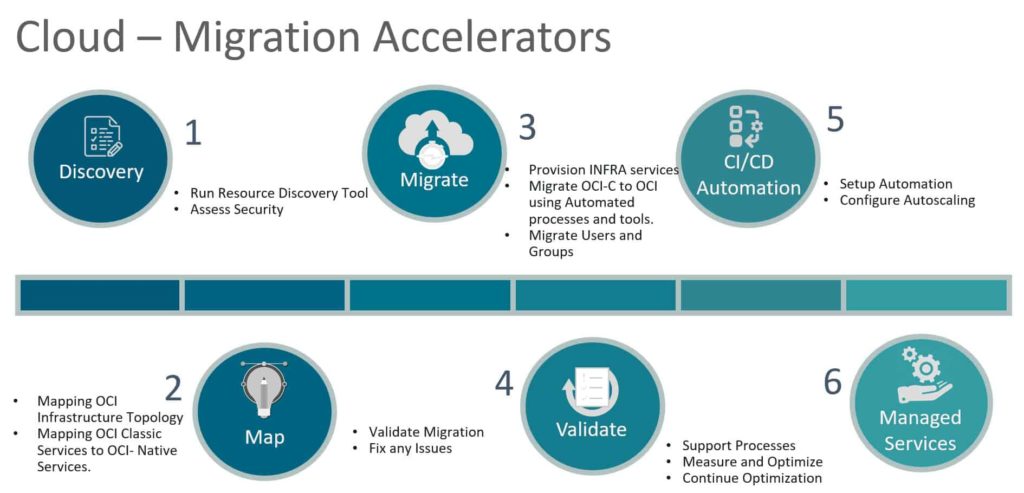
OMA Automation includes Service discovery tool, Cloud Setup tool, Cloud Network Connectivity too, Data Migration tool, Service Migration tool and Automation Testing tools as shown below.
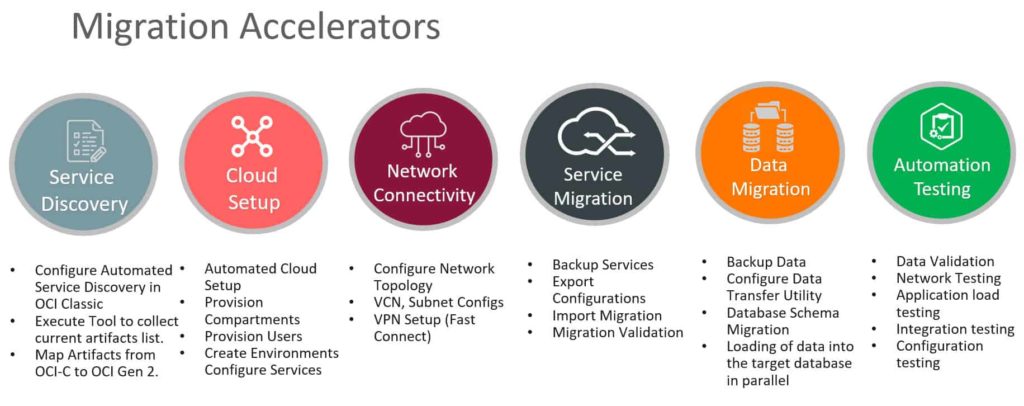
Case Study
A Fortune 500 customer of rSTAR’s was expanding their existing Oracle footprint by enhancing their Field Service automation, which empowers their field service technicians to work effectively in the field and report in real-time. The solution included assessment and implementation of the mMobile app to improve the field service experience for both technicians and supervisors.
The tech stack included a variety of services from Oracle Gen 1: – (Integration Cloud Service, Oracle Mobile Cloud, Oracle Application Container Cloud, Oracle Database and Oracle IaaS (Storage, Compute and Network). The customer wanted to migrate to Oracle Gen 2 to leverage better database and integration features. For migration, rSTAR has used OMA to automate the process, automatinge and smoothening the effort to great extent. rSTAR worked with the customer’s central IT department to access and plan the overall migration. The migration was performed using Agile Project Management methodology with sprints of 2 weeks each.
As the application is being used globally, it was challenging to have a long downtime to support cutover activities. rSTAR’s OMA provided automation and reduced the downtime to minimal to keep the operations running. Following is the technical architecture and few highlights.
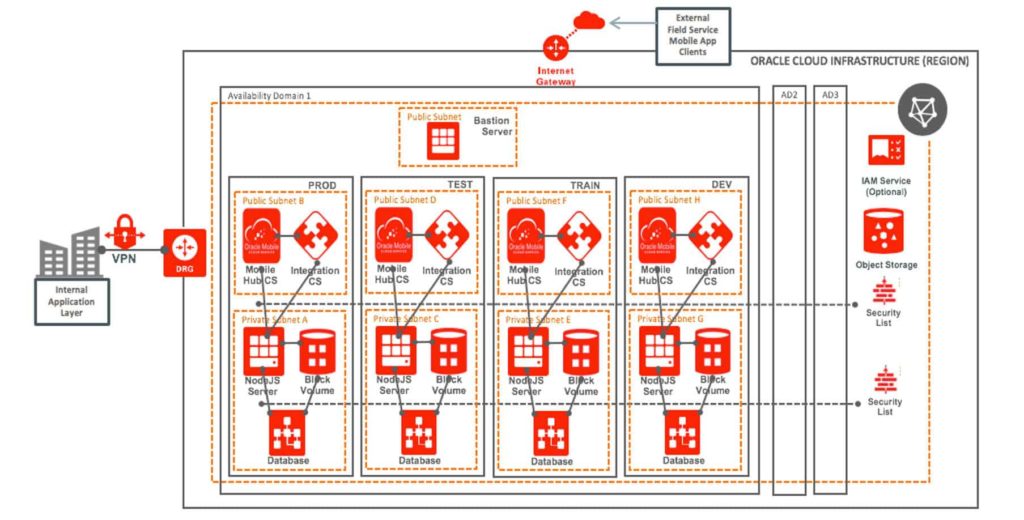
Highlights
- Using OMA, the overall migration effort is completed in 4 to 6 weeks.
- Ran Service Discovery Tool to list down the existing install base with network topology for all environments (DEV, TEST, STAGE, UAT and PROD)
- Infrastructure provisioning is automated using Cloud Setup Accelerator using Terraform templates using Compartments.
- Automated Service Migrations for services
o Database cloud service to Autonomous Transaction Processing
o Integration Cloud Service to Oracle Integration Cloud
o Application Container cloud service to Oracle Kubernetes cloud
o Oracle Mobile Cloud to Oracle Mobile Hub - Provided automated Load testing for application to evaluate the performance before and after.
- Executed smooth cutover for global users accessing application across multiple countries.
- Proactive & Predictive Monitoring of OCI, Applications and Databases.

